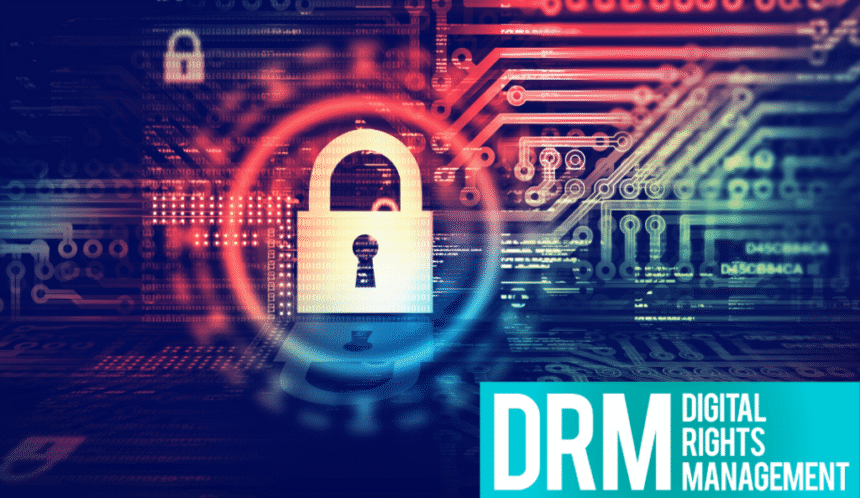Digital content protection is vital to creators and distributors in 2025. With changing threats and more distribution channels, selecting the appropriate DRM platform is important. This guide analyzes leading DRM solutions based on core capabilities, including encryption, licensing control, integration, performance, analytics, and cost, to allow content owners to make informed decisions pertaining to their specific distribution needs.
Encryption and key management
Robust encryption and sophisticated key management underpin robust content protection frameworks. Advanced services utilize state‑of‑the‑art algorithms like AES‑256 and integrate hardware security modules to protect keys from unauthorized access.
Key rotation policies prevent compromised credentials from being used by automatically replacing them, reducing exposure windows, while multi‑DRM platforms offer cross‑device compatibility by being able to integrate with proprietary and open‑source environments. Apart from that, token-based authentication mechanisms and secure communication channels ensure that content is protected during streaming sessions.
Complementary forensic watermarking technologies place unique identifiers into every stream, allowing rights holders to trace leaks back to a user. Standards for streaming protocols, including HLS, DASH, and CMAF, provide broad device compatibility, giving content owners peace of mind for various distribution networks.
Access and licensing controls
Content protection is not solely about encryption, but rather granular access and licensing controls. Modern platforms enable rights holders to define user entitlements by customizing policies that dictate playback duration, devices to be used, and geographic limitations.
Offline access capabilities allow for secure downloads with embedded license expiration, preventing content from being played outside of the authorized timeframes. Integration with single sign‑on and token service modules simplifies authentication while avoiding credential sharing.
Sophisticated rule engines allow for dynamic policy changes based on marketplace conditions, such as promotional campaigns or new regional licensing agreements. Real-time revocation capabilities further enable content owners to invalidate compromised licences on the spot.
This centralized control model minimizes unauthorized distribution and guarantees proper usage in line with contractual and regulatory requirements.
Integration and deployment
Flexible deployment options and smooth integration are vital for widespread DRM adoption. Top offerings offer robust SDK and RESTful APIs to enable easy integration with web, mobile, and connected TV applications.
Support for cloud‑hosted and on‑premises deployment models allows organizations with different security and compliance requirements to be accommodated.
Automated provisioning workflows allow for quick configuration of encryption keys, license servers, and user management settings. Additionally, compatibility with popular content management systems and delivery networks streamlines end-to-end workflows and reduces time to market.
Versioned API libraries and sandbox environments help developers test new features without the risk of affecting production services. This approach allows technical teams to deliver robust content protection with little overhead, maintaining existing infrastructure investments and maximizing operational efficiency.
Scalability and performance
Content delivery performance and system scalability are often the deciding factors when choosing a DRM platform. Load‑balanced license servers capable of managing sudden surges in requests without performance degradation are essential for high‑traffic events. Many solutions use geographically distributed edge servers and CDN integrations to minimize latency and optimize the playback experience.
Adaptive bitrate support and dynamic license caching mechanisms reduce playback interruptions during different network conditions. Monitoring tools capture request rates, error occurrences and key distribution metrics to facilitate proactive capacity planning and automated scaling triggers.
Benchmarking criteria for concurrent session capacity, response times, and resource utilization inform the selection process to ensure that the DRM service can support growth over time. Rights holders can ensure reliable delivery of secure content to global audiences by focusing on performance testing and elastic infrastructure design.
Analytics and reporting
Comprehensive reporting and analytics capabilities enable content owners to base decisions on data. Dashboards show real-time consumption figures, such as the number of streams, geographic distribution, and device breakdowns. Specific license usage reports show trends in active sessions, peak concurrent users, and playback failures, indicating possible security gaps or quality issues.
Revenue analytics link license activations to subscription tiers and purchase events for accurate ROI determination. Administrators are informed of anomalous patterns (repeated license denials or odd geographic access requests) through customizable alerts.
Exportable data feeds enable integration with business intelligence tools, allowing analysis to span across various platforms. In the process of evaluating a DRM Solution, content owners should ensure that reporting modules provide high‑level summaries as well as granular logs, ensuring full visibility into content distribution workflows.
In addition, advanced analytics can help predict demand, optimize content delivery strategies, and reduce churn through the identification of user behaviour patterns. Trends in viewer participation and session duration help the marketing teams to customize their campaigns and focus on the most active regions or user groups.
Compatibility with A/B testing platforms enables teams to measure the effects of various licensing models or content bundles. For enterprise environments, audit logs and compliance reporting may also be necessary to ensure compliance with regulations. In the end, strong analytics promote agility, allowing content providers to respond rapidly to market dynamics and user preferences.
Pricing and support for DRM Solutions
Pricing models vary significantly across the DRM landscape, which may include tiered subscription, pay‑per‑license, or usage‑based billing. Tiered plans tend to correlate feature sets with volume commitments, while usage‑based plans adjust costs to actual license transactions, providing cost control for smaller catalogues.
Transparent pricing structures improve budget predictability for long‑term planning and licensing. Enterprise agreements may include premium support, uptime guarantees, and custom feature development. Early renewal options tend to have discounted rates.
Developer communities, technical documentation, and the presence of dedicated support channels impact implementation success by preventing delays in resolving integration problems.
Service‑level agreements establish performance benchmarks and remediation procedures, offering legal guarantees for mission‑critical deployments. Rights holders should compare the total cost of ownership by considering the operational overhead, integration costs, and possible scalability charges.
DRM solutions selection is important in providing secure, scalable, and efficient content delivery in 2025. Doverunner stands out by having strong encryption, flexible licensing options, easy integration, great performance, insightful analytics, and competitive pricing.
By examining these critical aspects, content owners can be assured of protecting their assets. Doverunner offers a platform that strikes the right balance between top security and usability, providing legal compliance, operational efficiency, and user satisfaction across a myriad of digital ecosystems.
Related News:
Thailand’s Digital Economy Works to Keep Pace With the Digital Age














